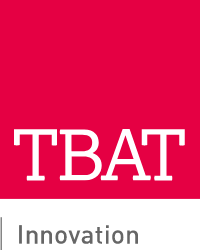

Key Features
DASA (Defence & Security Accelerator) seek proposals that will help to solve the problem of providing dermal protection against liquid chemical contamination.
Programme: DASA
Award: Share of up to £200,000
Opens: 20th Feb 2025
Closes: 15th Apr 2025
This Defence and Security Accelerator (DASA) competition is run on behalf of the UK government but there is significant potential for solutions developed to be exploited internationally. It is seeking proposals that will address the challenge of developing a fabric which provides dermal protection against liquid chemical warfare agents and other low surface tension liquids. DASA are interested in treatments, fabric design, novel constructions or any other approach that prevents the penetration of low surface tension liquids.
Launch webinar
6 March 2025 – Launch webinar providing further detail on the problem space and a chance to ask questions in an open forum. If you would like to participate, please register on the Eventbrite page.
Why we need Innovation in this area
Traditionally, dermal liquid protection has been provided by an air permeable, two- layer system, comprising an outer fabric, which controls the initial liquid interaction with the surface, and a carbon layer to absorb any vapours which penetrate the outer layer. It is the combination of these two layers which enables the wearer to operate in a CBRN environment without incurring the associated physiological burden of an air impermeable garment.
Changes in legislation (e.g. REACH) over recent years are constraining the methods available to Defence and Security for providing dermal protection against low surface tension liquids (such as chemical warfare agents (CWAs)). Due to these changes we are seeking innovative methods for future dermal protection.
The Requirement
The scope of this competition is technologies that provide wearable dermal protection against liquid chemical contamination. There are various means by which this could be achieved, and we are interested in any scientific and technological approaches that have the potential to deliver dermal protection against low surface tension liquids without the use of chemistries which are currently the subject of restriction proposals (e.g. under REACH, ECHA etc.).
DASA are interested in any approaches that are in scope, examples that we are aware of include:
Any approach which is able to render the surface both hydrophobic and oleophobic within the constraints stated is also of interest.
It should also be remembered that liquid hazards can also generate vapour hazards and any final product must be able to demonstrate the ability to deal with both hazards. It is acceptable to use a carbon layer, as in the current system, to achieve this. This could be supplied as Government Furnished Assets (GFA), if required. This is only of relevance for testing under Challenge 2.
Exploitation
Whilst the manufacture of suits falls outside the scope of this competition, there is a need within UK and allied nations to ensure our military and emergency responders are equipped with next generation protective suits that provide protective measures aligned to NATO AEP-72, “BS EN ISO 15025:2016 Protective clothing. Protection against flame” and “BS EN ISO 6530:2005 Protective clothing. Protection against liquid chemicals. Test method for resistance of materials to penetration by liquids”. Without commitment, funded projects that evidence demonstrable potential to support this objective may be supported to mature their innovation towards this objective.
This competition has two challenges.
Challenge 1
Challenge 1 is for innovators that have a technical solution that can be developed to demonstrate basic liquid protection properties (see Dstl Test Method) with potential to progress towards specific chemical warfare protection requirements.
Innovators must also provide a report detailing data on liquid behaviour in accordance with “BS EN ISO 14419:2010 Textiles — Oil repellency — Hydrocarbon resistance test” (BS14419) and “BS ISO 23232:2009 Textiles — Aqueous liquid repellency — Water/alcohol solution resistance test” (BS23232), to provide initial understanding of material behaviour for further development considerations. The inclusion of supporting video or photographs would be of interest. Passing these tests (BS14419 and BS23232) is not a requirement to continue for the additional tasking option.
By the end of Challenge 1 innovations must provide pass/fail evidence against the basic liquid penetration test provided. This will form a minimum entry requirement for proposals to continue for the additional tasking activity which has the same objectives as Challenge 2 described later.
If the proposed technical solution is a coating, initial testing must be performed using a plain weave cotton fabric or polyester-cotton fabric (max 65% polyester) with a maximum mass per unit area of 150 gsm.
It is acknowledged that there are different methods of preventing liquid penetration therefore the innovator must supply information regarding the mechanism by which their proposal prevents liquid penetration and provide any other test data that they believe to be relevant to demonstrating the efficacy of their approach for assessment.
Proposals submitted under this challenge should be for research projects lasting no longer than 8 months with a final deliverable of a material that meets the specified criteria. We would require all the information requested above at the end of this phase.
Between months 6 and 8 of the project, innovators will be invited to submit a further proposal detailing activities for extending the project for a further 8 months in order to meet the more demanding specification described in Challenge 2. These proposals will be assessed and the option to progress some, or all, of the bids may be exercised. At this stage no bids from new innovators will be considered.
Challenge 2
Running concurrently with Challenge 1, Challenge 2 will seek to evaluate technical solutions at higher TRLs (at least TRL5).
Challenge 2 is for innovators who already have a technical solution which can be shown to pass the Challenge 1 criteria (evidence to be supplied within the proposal). The proposal should also include information regarding the performance against BS14419 and BS23232 to aid our understanding of the proposed concepts.
Bids into Challenge 2 must demonstrate, by passing the Dstl Test Method supplied, that they have the potential to be developed to pass the essential chemical agent challenge as detailed in NATO AEP-72 and relevant robustness tests, detailed below. Full details of the experimental results of the supplied test should be submitted as part of your proposal.
The target for Challenge 2 is to demonstrate that your proposed technical solution can meet the essential criteria against liquid as detailed in NATO AEP-72. In order to demonstrate this, samples must be tested by a quantitative penetration test against both placed and pressure droplets (at 20 kPa) using sulfur mustard (HD), sarin (GB) and soman (GD), with sample points at 2h, 4h, 6h, 8h, 23h, and 24h intervals. VX testing must be carried out at 6h and 24h intervals by the Low Volatility Agent Penetration (LVAP) test method. All testing must be undertaken by a Test House accredited to BS EN ISO/IEC 17025:2017 General requirements for the competence of testing and calibration laboratories. You must also be able to demonstrate that your proposed technical solution is able to meet the durability and additional requirements listed below, as described in BS8467 (Section 6).
These include the following tests
Proposals under this challenge should be for research, development and testing activities lasting no longer than 8 months.
As part of any bid into Challenge 2 innovators must cost in testing to determine the quantitative CWA permeation of their candidate materials. These results must be supplied to DASA as part of the reporting milestones of the project to allow suitable review. The bid must also include costings for the mechanical testing against the stated standards. All testing must be undertaken by a Test House accredited to BS EN ISO/IEC 17025:2017 General requirements for the competence of testing and calibration laboratories.
It is recommended that you make early engagement with appropriate test houses to ascertain timelines and costs for the required testing.
DASA want novel ideas to benefit UK Defence and Security. Your proposal should include evidence of:
In particular, we are interested in
Critical elements to include
When writing your proposal, ensure you have comprehensively covered the following elements:
These activities may take place virtually. Slides and other material presented at these meetings should be appropriately marked and made available.
DASA are not interested in proposals that:
For further information on this competition, see guidance notes here
The total possible funding available for this competition is £2.6 million (excluding VAT).
DASA anticipate to fund up to 10 proposals for each challenge. DASA are expecting proposals to cost no more than £100,000 for Challenge 1 and £200,000 for Challenge 2 , but we reserve the right to fund proposals higher than these amounts.
Project duration:
Book an appointment to speak to one of our advisors to discuss your eligibility to apply for this Grant Funding opportunity.